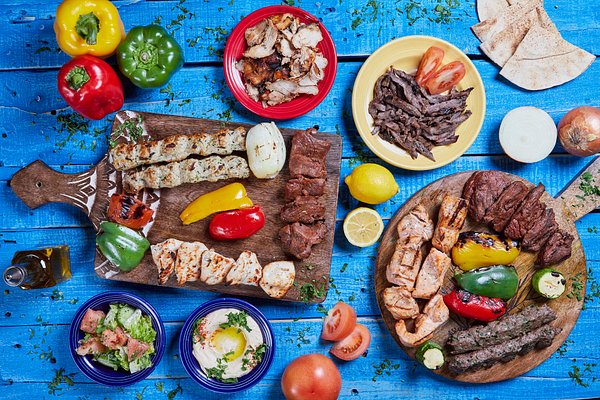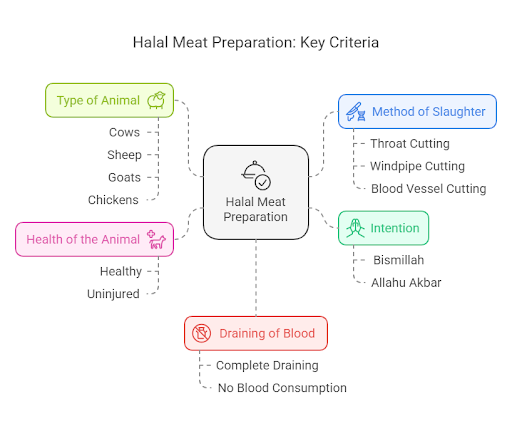The word Halah in Arabic language means permitted or lawful. Halal food refers to food that is permissible under Islamic law. The process of slaughtering animals for Halal food is governed by specific guidelines that ensure the meat is prepared in a way that is both humane and in accordance with Islamic teachings. This document outlines the key principles and practices involved in Halal slaughtering.

Key Principles of Halal Slaughter
- Intention (Niyyah): The person performing the slaughter must have the intention to carry out the act in accordance with Islamic law. This intention is often verbalized by saying “Bismillah” (In the name of Allah) followed by “Allahu Akbar” (Allah is the Greatest).
- Type of Animal: Only certain animals are considered Halal. For example, animals such as cows, sheep, goats, and chickens are permissible, while pork and its by-products are strictly forbidden.
- Health of the Animal: The animal must be healthy at the time of slaughter. Any animal that is sick or injured is not considered Halal.
- Method of Slaughter: The animal must be slaughtered by cutting the throat, windpipe, and blood vessels in the neck, which ensures a swift and humane death. This method is intended to minimize the suffering of the animal.
- Draining of Blood: All blood must be drained from the carcass, as consuming blood is prohibited in Islam.

The Slaughtering Process
- Preparation: The animal is brought to the slaughtering area, which should be clean and free from distressing sights or sounds.
- Invocation: The slaughterer recites the appropriate prayers before beginning the slaughter, invoking the name of Allah.
- Slaughtering: The slaughterer uses a sharp knife to swiftly cut the throat, windpipe, and blood vessels. This method is designed to ensure a quick death and minimize pain.
- Post-Slaughter: After the animal has been slaughtered, it is hung upside down to allow the blood to drain completely from the body.
- Processing: Once the blood has been drained, the animal is then processed according to Halal standards, ensuring that all handling and preparation methods comply with Islamic law.

Conclusion
Halal slaughtering practices are rooted in Islamic teachings that emphasize compassion and respect for animals. By adhering to these principles, Halal food ensures that the meat consumed by Muslims is not only permissible but also ethically sourced. Understanding these practices can help individuals appreciate the significance of Halal food in the context of Islamic dietary laws.

